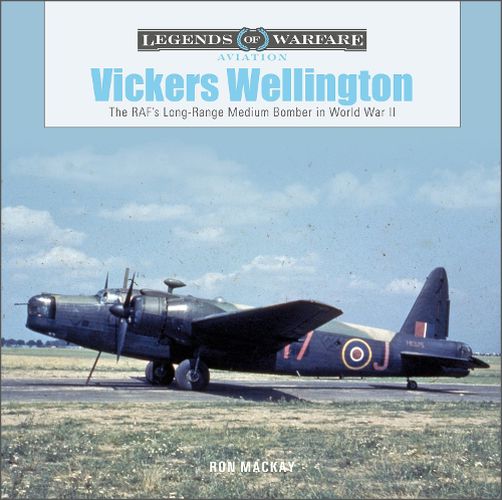Readings Newsletter
Become a Readings Member to make your shopping experience even easier.
Sign in or sign up for free!
You’re not far away from qualifying for FREE standard shipping within Australia
You’ve qualified for FREE standard shipping within Australia
The cart is loading…






This book is a concise, visual history of this iconic RAF WWII bomber by noted aviation historian Ron Mackay. The Vickers Armstrong Wellington, affectionately dubbed the Wimpy after the hamburger-scoffing cartoon character, lays claim to two distinctions within RAF WWII annals. The first related to its geodetic structure, with a cloth covering that proved to be superior to previous designs for surviving battle damage. Second, the aircraft was destined to remain on the front line with Bomber Command throughout the entire course of the war. Whether serving as a first-generation bomber between 1939 and 1943, along with its Whitley and Hampden contemporaries, or on antisubmarine operations with Coastal Command, it proved to be a critical asset in applying steady inhibiting pressure on Axis Europe. Service as an aircrew trainer both during and following WWII was a secondary but very valuable function, as were latter-day duties with Transport Command.
AUTHOR: Ron Mackay’s literary career in WWII aviation history has spanned four decades, with coverage of the Royal Air Force, Luftwaffe, and USAAF being completed in almost equal measure. SELLING POINTS: . Includes an operational record of the aircraft’s service between 1939 and 1953 . Action with RAF Bomber, Coastal, and Transport Commands is detailed . Learn about the unique geodetic structure of the Cloth Bomber
190 colour and b/w photographs
$9.00 standard shipping within Australia
FREE standard shipping within Australia for orders over $100.00
Express & International shipping calculated at checkout
This book is a concise, visual history of this iconic RAF WWII bomber by noted aviation historian Ron Mackay. The Vickers Armstrong Wellington, affectionately dubbed the Wimpy after the hamburger-scoffing cartoon character, lays claim to two distinctions within RAF WWII annals. The first related to its geodetic structure, with a cloth covering that proved to be superior to previous designs for surviving battle damage. Second, the aircraft was destined to remain on the front line with Bomber Command throughout the entire course of the war. Whether serving as a first-generation bomber between 1939 and 1943, along with its Whitley and Hampden contemporaries, or on antisubmarine operations with Coastal Command, it proved to be a critical asset in applying steady inhibiting pressure on Axis Europe. Service as an aircrew trainer both during and following WWII was a secondary but very valuable function, as were latter-day duties with Transport Command.
AUTHOR: Ron Mackay’s literary career in WWII aviation history has spanned four decades, with coverage of the Royal Air Force, Luftwaffe, and USAAF being completed in almost equal measure. SELLING POINTS: . Includes an operational record of the aircraft’s service between 1939 and 1953 . Action with RAF Bomber, Coastal, and Transport Commands is detailed . Learn about the unique geodetic structure of the Cloth Bomber
190 colour and b/w photographs